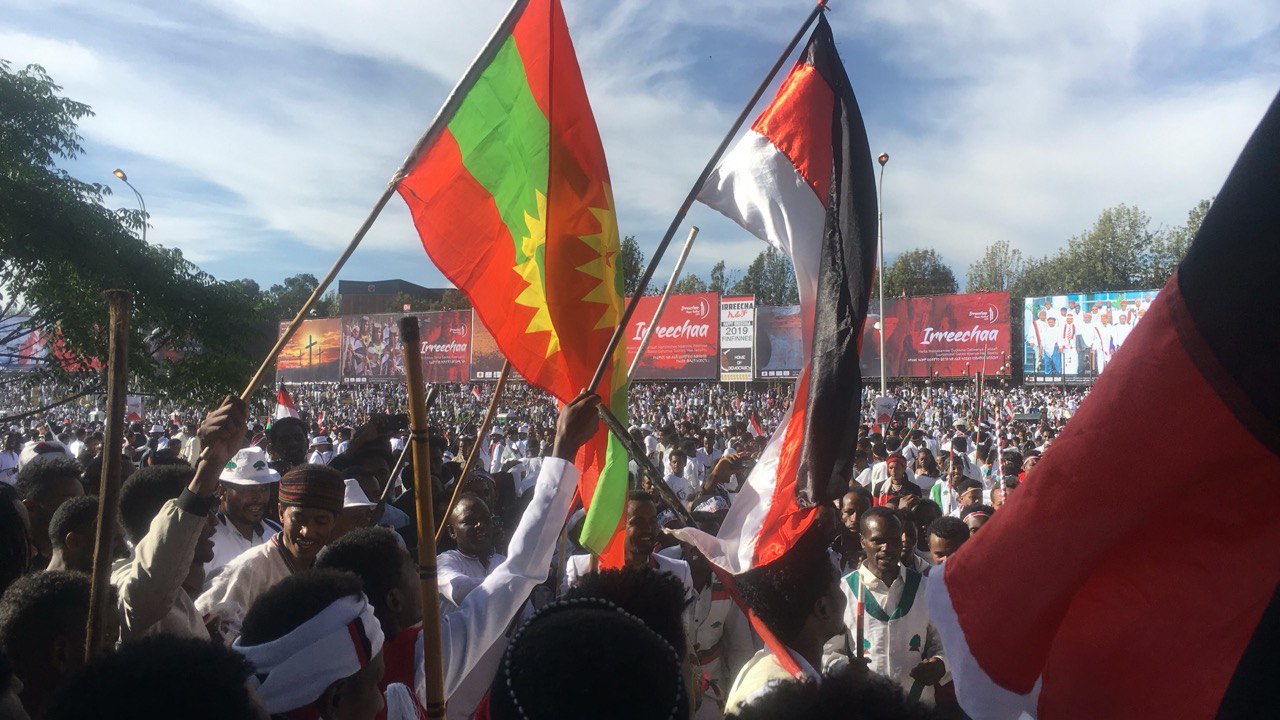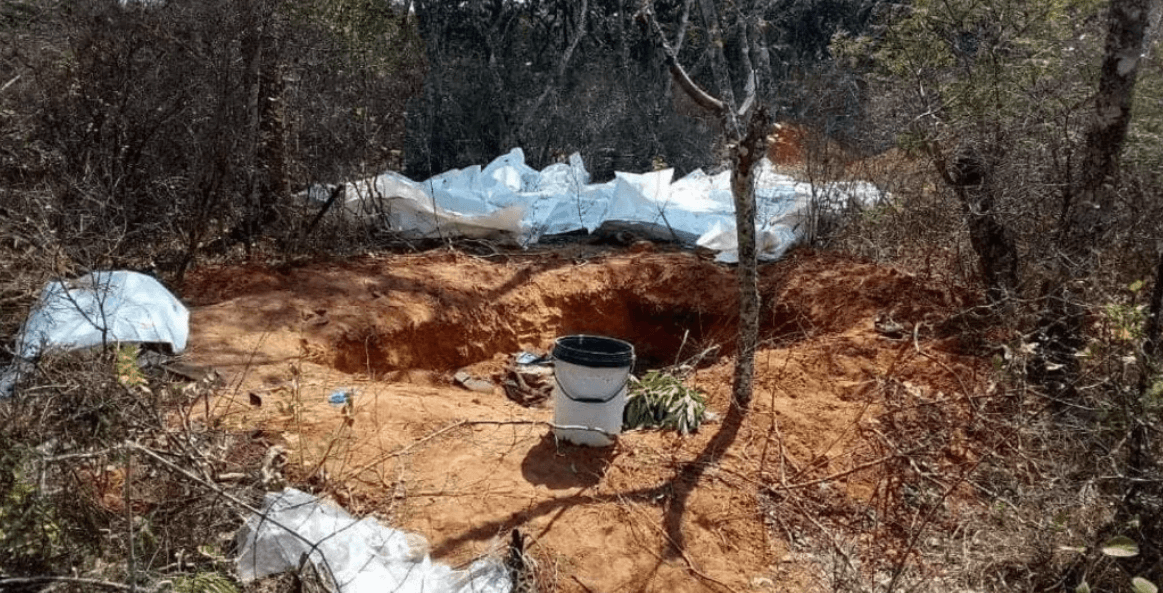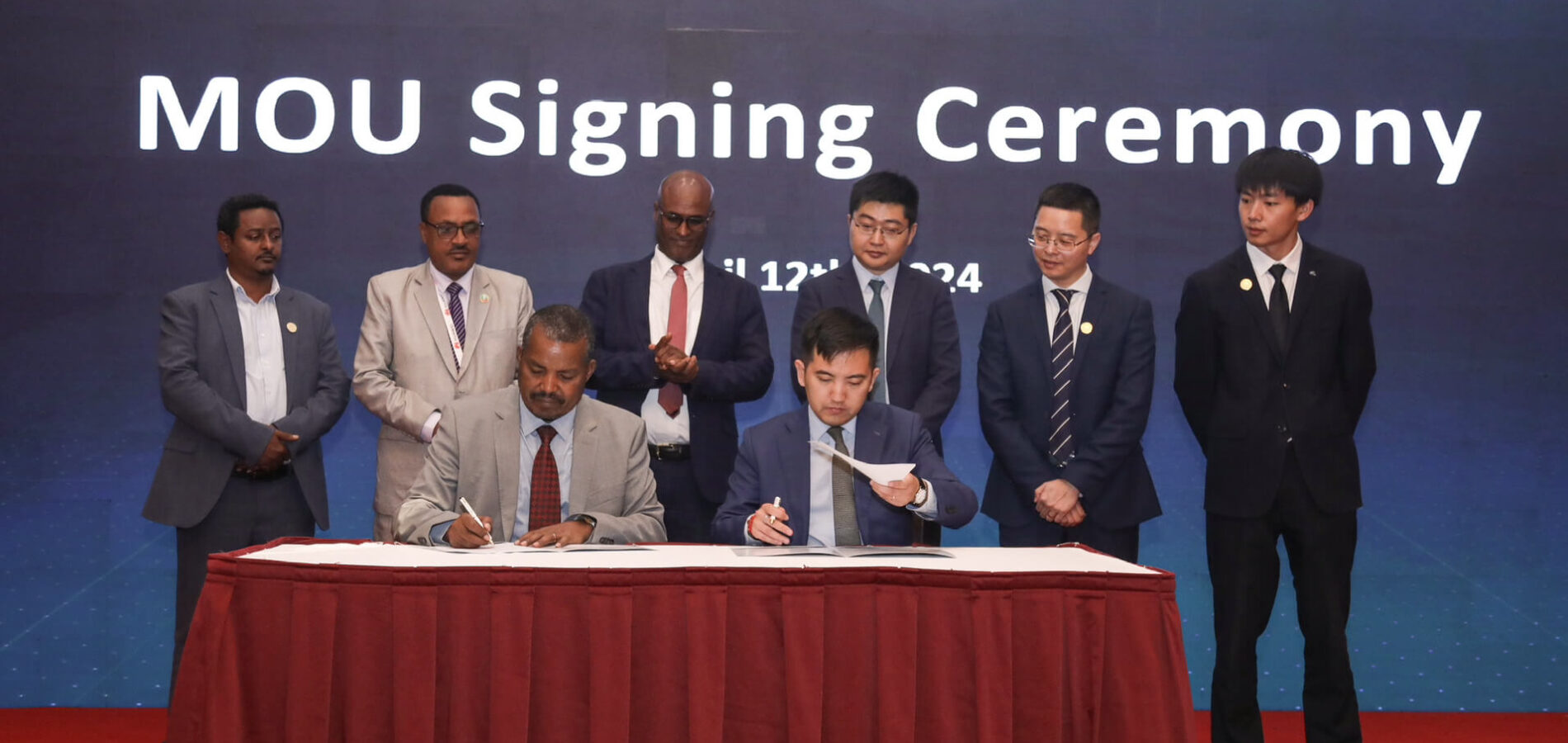Why resist the Addis Abeba Master Plan? – A constitutional legal exploration
Tsegaye R. Ararssa, Special to Addis Standard (@RArarssa)
When,in mid April 2014, the government in Ethiopia announced its readiness to implement what it called the “Addis Abeba Integrated Regional Development Plan” (the “Master Plan” for short), which proposes to annex most of the city’s surrounding areas belonging to the National Regional State of Oromia, it provoked an immediate reaction from university students across the state of Oromia. But through the instrumentality of its security forces (such as the Federal and State Police, the Army, and the Special Forces), the government responded with brutal repression of the protests.
Fuelled by anger triggered by the reckless words and utter disdain expressed in the course of a televised discussion between the Addis Abeba City Administration and the mayors and other executives from the surrounding towns over the Master Plan, and informed by a history of killing, mutilation, dispossession, and political marginalization (all of which continue unabated), the protests were more a spontaneous reaction than a planned resistance. In a series of campus-based and street protests that barely lasted for two weeks, countless innocent Oromos were killed and jailed.
Although unfounded claims that some of these students were released on July 9th in the wake of President Barak Obama’s visit to Ethiopia, many of them remain jailed and are appearing in a court of law charged with the country’s infamous anti-terrorism proclamation.
In this piece, I seek to make a close reading of the constitutional-legal frame within which to situate the Master Plan. Accordingly, first, I seek to explore the constitutional-legal context within which the Master Plan should be considered and analyzed. Next, I will present a summary of four major constitutional-legal arguments against the Master Plan.
Constitutional context
The point of departure is the assumption that – the important debate about legitimacy aside – the constitution is ‘the supreme law of the land’ against which the validity of all laws, decisions, and practices is measured. According to the constitution, the Ethiopian state is federal in structure (arts 1 and 50-52). Ethiopia is a ‘nation of nations’ that can be considered a multinational federation. In the language of the constitution, ‘Nations, Nationalities, and Peoples’ are the locus of sovereignty (art 8) and have the right to self-determination (art-39). As sovereign entities, they are the ‘building blocks’ that have a co-equal share in the founding of the contemporary Ethiopian polity. As subjects with the right to self-determination, they have, inter alia, the right to a ‘full measure of self-government’ (art 39(3)). Accordingly, most of these ‘nations,’ based on the four-fold criteria: settlement pattern, language, identity, and consent of the people concerned’ (art 46(1)), have established the nine states that constitute federal Ethiopia (art. 47), one of which is the state of Oromia.
Addis Abeba (which Oromos call Finfinne) is designated as the “capital city of the federal” government (art 49(1)) whose ethnically diverse people have a right to self-government (art 49(2)) that is ultimately responsible to the federal government (art 49(3)). Being an Oromo city (albeit the constitution talks only about its ‘location’ in Oromia), it is also the capital city of the state of Oromia. This was stated in both the old and revised constitutions of Oromia (Art 6 of the 1995 constitution and Art 6 of the revised 2001 Constitution as amended in 2005). Owing to its being an Oromo city, the constitution clearly recognizes Oromia’s ‘special interest in Addis Abeba’ particularly in relation to social services, natural resources, and joint administrative matters (art 49(5)).
The articulation of the content of this special interest has been a matter of quiet controversy between the Oromia government and the federal government. The law envisaged to come to effect in order to articulate it was never made. Oromia’s request for the law fell on deaf ears; and its formal request for interpretation from the constitutional interpreter (the House of Federation cum Council of Constitutional Inquiry) was rejected by the latter on the ground that they do not give ‘advisory opinion’ in the absence of ‘case and controversy’. In the meantime, the formal and informal land-grabbing continued to spread into the neighboring towns and districts. There being no formal institution that regulates inter-governmental relations –and the federal government being indifferent to the concerns of Oromia and the city government virtually absent from the scene since 2005 – the matter became increasingly irritating to the Oromia officials. Frustrated, in 2009, the legislature of Oromia, the Caffee, established a ‘Special Zone’ of towns and districts that surround the city of Addis Abeba. This, they hoped, would give them a focused mode of operation in relation to the specific problems of these towns that are hard hit by the spillover effect of Addis Abeba’s problems (such as wanton destruction of the forest, environmental pollution due to emissions from factories and flower farms, illegal constructions and settlements, all of which was buttressed by absence of governance and corruption).
The boundary of the city was long agreed to be the boundary of the city as circumscribed in 1992 (as per Proclamation No.7/1992 which identified the city as one of the 14 Regions). According to the constitution, the boundaries of states is subject to review either through referendum organized in relation to self-determination (art 39), or through a formal constitutional amendment process (art 105(2)). To date, no such referendum was heldnor was there any attempt to amend the constitution.
Four legal arguments against the Master Plan:
The whole thrust of this piece is to argue that the Master Plan is legally indefensible. Contrary to what government lawyers claim (arguing that the plan is part of constitutional mandate to create one ‘economic’ and ‘political’ community),the plan violates the letter and the spirit of the constitution on many levels. In this section, I present four arguments that indicate that the plan is unconstitutional. As I do so, I will touch upon the content, process, and consequence of the plan and its political implications.
Argument from federalism
The plan violates the principle of federalism. In particular, it violates the principle of comity and mutual respect (art 50(8)) and the proper mode of managing intergovernmental relations pertaining to cities. This seems to emanate from a fundamental misunderstanding of federalism. In an unending turn of irony, the government is blaming the Oromo public for misunderstanding the ‘true goal’ of federalism. This misunderstanding is also compounded by the belief held among many that Addis Abeba belongs to the federal government. It also stems from mistaking the federation for a decentralized unitary system. Nothing typifies this more than the heavy reliance on the Master Plans of cities in a unitary country, namely Paris and Lyon of France.
As indicated above, the Master Plan also wrongly conceives Addis Abeba as a federal territory when what it actually is, is the seat of the federal government. In other words, it is wrongly thought that Addis Abeba is the territory of the federal government. In reality, Addis Abeba is not a federal capital territory. It is an Oromo city which serves as the capital city of both the federal government and the government of Oromia.That this has not been clearly spelt out in the constitution has caused an immense sense of insecurity and agitation among Oromos for a long time. The fact that the constitution speaks about it in terms of its ‘location in Oromia’ makes the issue of ownership ambiguous thereby reinforcing the sense of insecurity among Oromos. The ambiguity has also caused the confusion as to who the host is and who the guest is.
As a self-governing city ultimately accountable to the federal government, Addis Abeba is governed through its own city charter and its own Master Plan (which, legally, is expected to be revised every ten years). The city’s charter defines the powers and responsibilities of the different organs of the city government (the council, the Mayor and the Executive (the Cabinet/the Bureau Heads, and the General Managers), and the Municipality Court. It also defines the powers and responsibilities of the sub-cities (alias Kifle-Ketema) and districts (Kebeles). The city’s territorial limit is defined and the competence/jurisdiction of the city government has been clearly established. The boundary of the city ends at the outer limits of the ten Kifle-Ketemas.
As one of the nine constituent states of the Ethiopian federation, Oromia has its own jurisdiction over its own bounded territory, with its own government that operates (ideally) in accordance with its own constitution. The powers of the states (exclusive and shared as concurrent) are clearly defined in the federal constitution (arts 51-52). The Constitution of Oromia is the supreme law of the territory of Oromia (art 9). Caffee Oromia is the legislature and the supreme political organ in the parliamentary system of government that the state has adopted for itself (art. 50(3) of FDRE and art 46 of the Oromia Constitution). As such, the Caffee is responsible for making any decision (legislative, financial, and political) over matters in its territory within its jurisdictional competence. Needless to say, it does not involve in the administration of the city of Addis Abeba—although one expression of its special interest is its involvement in joint administration of the city.
Imposing a Master Plan designed by the Federal Government(using the City Council as a proxy) on the towns of Oromia and incorporating these towns into Addis Abeba violates the principle of federalism. Ideally, if the city seeks to coordinate its development with the adjacent territories and townships, then it initiates a formal intergovernmental coordination of city development. It can invite the government of the State of Oromia to make a similar effort to raise the level of development of the surrounding cities so that necessary linkages are created in accordance with agreed terms of reference and agreed set of logistical and financial responsibilities. A joint inter-governmental body that oversees the legality, political propriety, financial efficiency, and administrative effectiveness of the project is established. This body could be an ad hoc bilateral inter-governmental relations (IGR) body or it could be a permanent and multilateral body that manages the intergovernmental relations under a pre-existing set of principles and rules. In Ethiopia, the latter framework does not exist. The Master Plan under discussion now is prepared entirely by the Addis Abeba City government (under the patronage of the Federal Government, especially, the Ministry of Federal Affairs), to be run by a project team of the city overseen by a Board of senior officials of the two governments. That it is the city officials that train the Oromia officials about the implementation of the plan betrays the truth about who is in charge of the plan. The fact that some of the Oromia mayors raised questions about the need to consult the government and people of Oromia regarding the matter, even at this late stage, is another indication of how the task is an exclusively Addis Abeba business that is conducted at the expense of the excluded Oromia.
The fact that the plan speaks of incorporating 36 towns and 17 Woredas of Oromia to make them part of the Greater Addis Abeba territory is also a blatant attempt at modifying the territory of the state of Oromia unilaterally. This act of altering boundaries cannot normally happen without a formal constitutional amendment or through the self-determination act that is overseen by the house of federation under article 39(1) & (4) cum arts 62 of the Federal Constitution. Moreover, by subsuming these towns and Woredas of Oromia under Addis Abeba administration, the plan submerges and liquidates the long-demanded special interest of Oromia in the city. Instead of answering the question, this plan now makes the special interest irrelevant by further peripheralizing the state of Oromia from matters concerning the city or the wider country.
In short, the Master Plan is constitutionally indefensible because it: violates the principle of federal comity (mutual respect of the different orders of government); usurps the power/jurisdiction of the state of Oromia; alters the boundary of Oromia by incorporating 36 towns and 17 Woredasof the regional state of Oromia into Addis Abeba and subordinating their jurisdiction under the city government; and eliminates the special interest of Oromia and makes the question irrelevant.
The Master Plan violates the procedure for constitutional amendment
In altering the boundaries of the state of Oromia and the city administration of Addis Abeba, the plan delves into measures that necessitate constitutional amendment. According to the constitution (arts 46-47), states are formed on the basis of settlement pattern, language, identity, and consent of the people concerned. In theory, this act of carving the constituent units is completed when the constitution was adopted in 1995. Presumably, it is based on these criteria that the units were established. The imperative of self-determination allows the possibility of forming a new unit in the federation and/or a separate state (outside of the federation). But when that happens, that effects a constitutional amendment. In order to change the boundaries of existing states, like the one that the Master Plan is forcing upon the State of Oromia, however, one needs to initiate a constitutional amendment in which one either changes the criteria of unit formation or just injects a clause that takes note of the boundaries of the concerned states in article 46-47. To do so without such an amendment or through an act of self-determination will challenge the integrity of the constitution. This Master Plan, by incorporating the new towns and woredas into Addis Abeba, alters too much without a formal constitutional amendment and as such is unconstitutional. This by passing of procedures of amendment will ultimately affect the integrity of the constitution and the order thereof. But in an ‘authoritarian constitutional system’ in which the text of the constitution is invoked more to legitimize sinister political goals than to advance just ideals, subverting the constitutional ideals through other laws and/or policies does not come as a surprise.
The Master Plan violates human rights
More importantly, the Master Plan leads to the violation of individual rights of Oromo farmers, the collective rights of Oromos qua Oromos, and the rights of the State of Oromia. To begin with, the Master Plan violates the rights of Oromo farmers to socio-economic benefits. Accordingly, the Oromo farmers’ “right to obtain land without payment and the protection against eviction from their possession” (under art 40(6)) will be violated by the evictions that this Master Plan entails. Similarly, their right to livelihood, adequate living standard, chosen work, or generally, access to economic facilities (e.g. land) and social opportunities (including mother-tongue education) will be at risk in the event that this Master Plan is implemented. All these rights, one notes, are elaborately stated in art 41 of the FDRE constitution. The right of these farmers to participate in the design of development plans (arts 89(6)), is also affected by the Master Plan. Moreover, the cultural rights of Oromos under art 41(9) such as preservation of historical and cultural legacies will be compromised in a city that has historically neglected and/or actively denigrated the Oromo culture and identity. Depending on the aim and content of the Master Plan (which is not clear so far in spite of the insistence of the officials to the contrary), the right of Oromo farmers to a “clean and healthy environment” (under art 44(1) cum art 92(1)) may be adversely affected. The right of displaced persons or those “whose livelihoods have been adversely affected as a result of programs” to “commensurate monetary or alternative means of compensation, including relocation with adequate state assistance” will be violated. This is because past experience shows that the state neither paid compensation nor provided relocation funds. The token of ‘compensation’ investors paid was neither adequate nor voluntary. If experience is something to go by, there is hardly a reason for anyone to expect that the displacements that come about because of the implementation of this plan will be any different. The fact that the “right to administrative justice” and the right to remedies is not explicitly recognized in the constitution compounds the problems that might arise in the event that the Master Plan is implemented.
The second category of rights that the Master Plan violates pertains to the collective right of Oromos. If land is jointly owned by the “Nations, Nationalities, and Peoples” and the State (as per art. 40(3) cum 40(6)), the Master Plan defies the right of the Oromos as Oromos to their land. In addition, the right of Oromo communities to development (art 43) and environment (art 44) in their own state will be violated. Moreover, as a matter of state policy objectives, the constitution also considers ‘peoples’ right to participation in policy formulation (art 90(6)) and to “consultation and expression of views” (art 92(3)) as important. The fact that the process so far lacked participation of the public makes it evident that these rights of the Oromo are already violated and/or are exposed to violation. The Master Plan also continues the decades-long neglect of the special interest of the State of Oromia. In fact, it renders it irrelevant.
The principle of direct democracy in art 8 (3) suggests that citizens not only engage in consultation but also protest government policies when they disagree with them. The students’ and the peoples’ protest should not have been met with killings, shootings, and arrests and detentions. The junior Oromo officials’ objection to the Master Plan in the training sessions shouldn’t have been met with reprisals. That the protest to resist the implementation of the Master Plan has led to arbitrary killings, injuries, arrests, and detentions implicates it not only in a blatant defiance of peoples’ voices but also in a gross violation of human rights of Oromo citizens.
The Master Plan ignores state duty to ensure good governance
Transparency and accountability are the epitome of good governance. Officials of the government in Ethiopia make a frequent use of these terms to justify almost any measure they take. In fact, most of their policies are justified in the name of enhancing development and ensuring good governance.Constitutionally speaking, the state has the obligation to conduct its affairs in a transparent and accountable manner. Thus, according to article 12 of (both the FDRE and Oromia) constitution, “the conduct of government shall be transparent (1). Any public official or an elected representative is accountable for any failure in official duties (2).” That is to say that, first, the conduct of government (i.e., its deliberation, decision, or action) is done openly before a watching public. Policies, laws, programs, and measures adopted by state are expected to be made available to the public. To ensure accountability, the officials are expected to listen to the peoples’ views, be responsive to the public’s demands, and take responsibility for such policies, laws, programs, and measures (especially if they have adverse consequences for the people).
The Master Plan’s design is shrouded in secrecy. To date, despite all efforts, I could not trace the authoritative version of the Master Plan document that also explains the goals and objectives, the rationales, and the enabling/disabling legal environment among others.
To date, the government did not assume responsibility for the adverse consequences that flew from the Master Plan. After brutal repression of the protest by the security forces, the officials have been trying to persuade the public about the “supreme importance” of the plan and to demand that people should not listen to the distraction by “some external forces seeking to make political gains” and forces that want to disrupt “our development”. The government officials repeatedly suggested that the Oromo public are misinformed and agitated by ‘others’. They have thus conducted a series of meetings “to correct the public’s misunderstanding of the matter.” No measure is taken to bring to justice the security forces that went on a rampage of shooting. Not even a commission of inquiry is instituted. No government official expressed regret or apology for the death of innocent students, children and other protestors.Some of the students who were jailed more than a year ago are still in jail without charges and those charged by prosecutors, namely: BilisummaDammana, LenjisaAlemayehu, AbebeUrgessa, AdugnaKesso, TeshaleBekele and MagarsaWarqu will be reappearing at a court in Addis Abeba on August 6th. No government official came out to make any statement showing a willingness to rethink the Master Plan. This refusal to take responsibility and to be accountable to the public may exacerbate the tension impacting negatively on the peace and stability of the country in general. While that does not come as a surprise to people constantly living in an overly securitized state, to legal professionals, the absence of any gesture in the direction of ensuring accountability suggests the need for us to consider international tribunals before which the officials should be held accountable personally as individuals and collectively as a government.
Conclusion
By showing how the plan is against the principle of federal comityand by demonstrating its incompatibility with the federal structure of the contemporary state; by showing how the Plan destabilizes the integrity of the constitutional order by neglecting the procedural rules for constitutional amendment; through identifying the human rights (individual and collective) that the Master Plan will put at risk; and by discussing how the design and implementation of the plan is shrouded in secrecy and the consequent defiance of the constitutional principle of transparency and accountability, I have attempted to present an argument that the plan is constitutionally-legally indefensible. It is important to note that the invocation of development as an overarching goal does not justify the inappropriateness of the plan or the massive violation of the rights of the displaced farmers and of the protestors that held demonstrations to resist the implementation of the Master Plan. In a ‘constitutional’ order that supposedly recognizes the importance of the voice and votes of the peoples of Ethiopia (let alone in one where they are sovereign), to protest a policy would be a mere exercise of a right, one that helps to overcome the democratic deficits of a representative government, not a condition that will render a citizen an enemy to be eliminated by all means necessary (including murder and torture by Special Forces of the Ethiopian army).
The announcement of the Master Plan has led to another round of killing and arrests of the Oromo youth. Ethiopian jails are beefed up yet more. Oromia is subjected to a continued state terror. Ethiopia is fast becoming a concentration camp of Oromos. But Oromo national resistance is also taking a national scale and continuing to haunt Ethiopia once more. Coming back in resilience, Oromo nationalism refuses to die, defies the repression, and returns to the Ethiopian scene once more.
As ever, in its response to the protests, Ethiopia demonstrated that it did not know how to handle peoples’ demand politically. Of course it does know how to handle it militarily. But then, one needs to ask: when will these men in the uniform (the soldiers) face and bow to the men in robes (the judges)? When will the men in suits (the politicians) face and bow to the men in robes (the judges)? When will the law (with all its limitations and its embeddedness in politics) take precedence over politics as policing? Only time will tell.
ED’s Note: Tsegaye R. Ararssa is a PhD Candidate at The University of Melbourne Law School, and can be reached at: tsegayer@gmail.com








